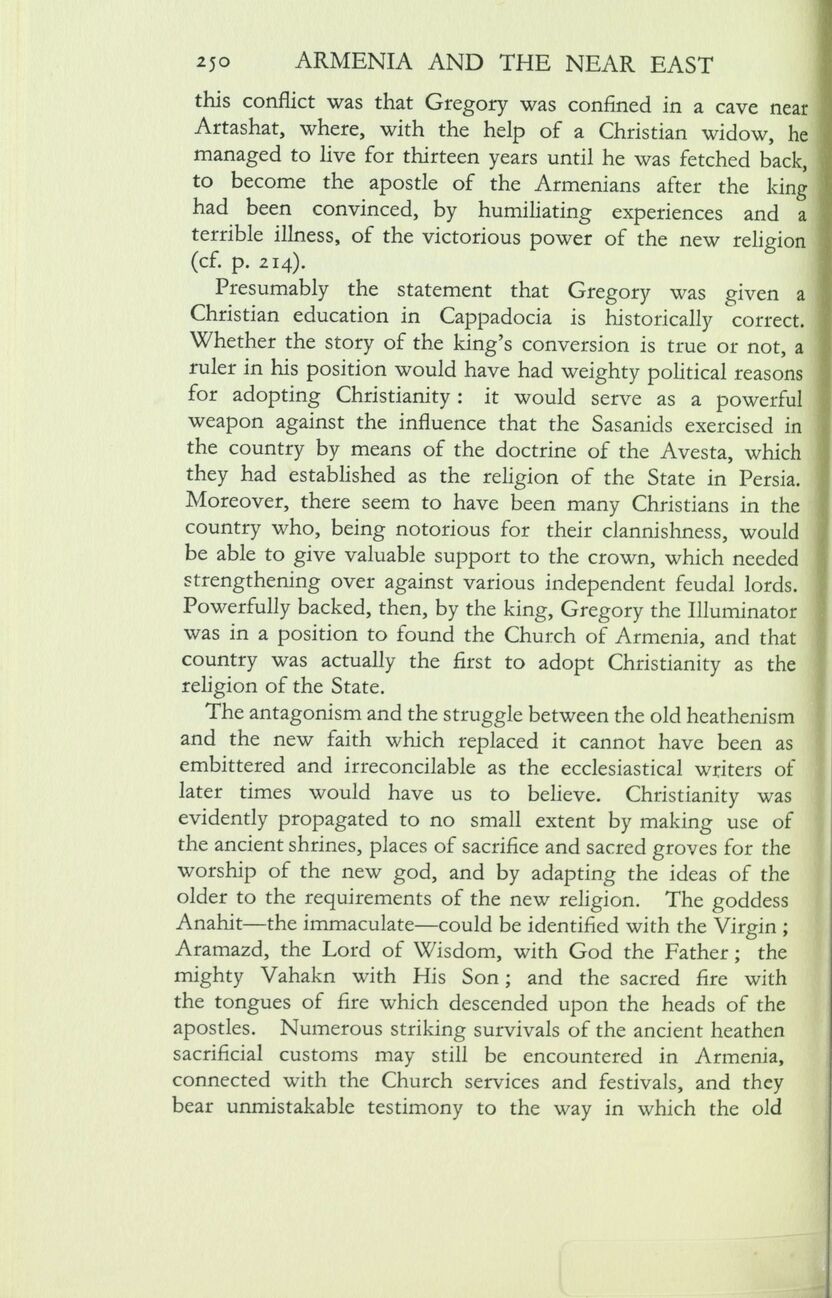
Full resolution (JPEG) - On this page / på denna sida - X. Chapters in the history of Armenia

<< prev. page << föreg. sida << >> nästa sida >> next page >>
Below is the raw OCR text
from the above scanned image.
Do you see an error? Proofread the page now!
Här nedan syns maskintolkade texten från faksimilbilden ovan.
Ser du något fel? Korrekturläs sidan nu!
This page has never been proofread. / Denna sida har aldrig korrekturlästs.
ARMENIA AND THE NEAR EAST
250
this conflict was that Gregory was confined in a cave near
Artashat, where, with the help of a Christian widow, he
managed to live for thirteen years until he was fetched back,
to become the apostle of the Armenians after the king
had been convinced, by humiliating experiences and a
terrible illness, of the victorious power of the new religion
(cf. p. 214).
Presumably the statement that Gregory was given a
Christian education in Cappadocia is historically correct.
Whether the story of the king’s conversion is true or not, a
ruler in his position would have had weighty political reasons
for adopting Christianity : it would serve as a powerful
weapon against the influence that the Sasanids exercised in
the country by means of the doctrine of the Avesta, which
they had established as the religion of the State in Persia.
Moreover, there seem to have been many Christians in the
country who, being notorious for their clannishness, would
be able to give valuable support to the crown, which needed
strengthening over against various independent feudal lords.
Powerfully backed, then, by the king, Gregory the Illuminator
was in a position to found the Church of Armenia, and that
country was actually the first to adopt Christianity as the
religion of the State.
The antagonism and the struggle between the old heathenism
and the new faith which replaced it cannot have been as
embittered and irreconcilable as the ecclesiastical writers of
later times would have us to believe. Christianity was
evidently propagated to no small extent by making use of
the ancient shrines, places of sacrifice and sacred groves for the
worship of the new god, and by adapting the ideas of the
older to the requirements of the new religion. The goddess
Anahit—the immaculate—could be identified with the Virgin ;
Aramazd, the Lord of Wisdom, with God the Father ; the
mighty Vahakn with His Son ; and the sacred fire with
the tongues of fire which descended upon the heads of the
apostles. Numerous striking survivals of the ancient heathen
sacrifkial customs may still be encountered in Armenia,
connected with the Church services and festivals, and they
bear unmistakable testimony to the way in which the old
<< prev. page << föreg. sida << >> nästa sida >> next page >>